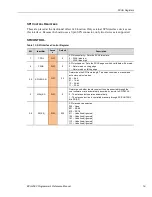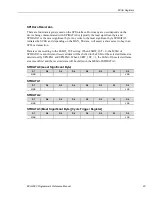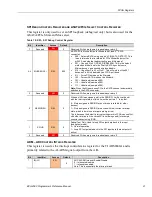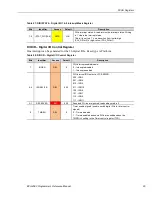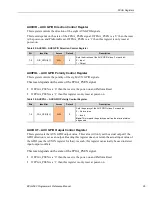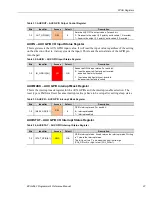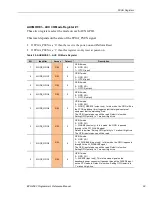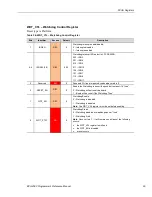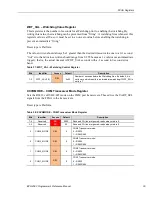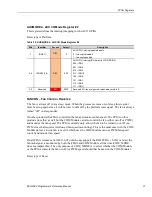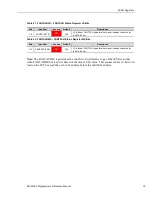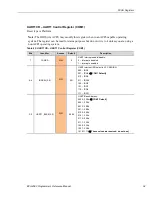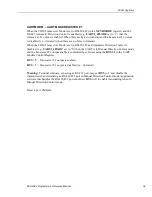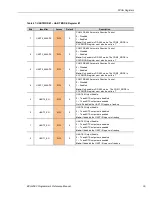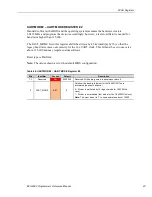
FPGA Registers
EPU-4562 Programmer’s Reference Manual
26
AUXDIR – AUX GPIO Direction Control Register
This register controls the direction of the eight AUX GPIO signals.
This reset depends on the state of the FPGA_PSEN signal. If FPGA_PSEN is a ‘0’ then the reset
is the power-on and Platform Reset. If FPGA_PSEN is a ‘1’ then this register is only reset at
power-on.
Table 29: AUXDIR – AUX GPIO Direction Control Register
Bit
Identifier
Access
Default
Description
7-0
DIR_GPIO[8:1]
R/W
0
Sets the direction of the AUX GPIOx lines. For each bit:
0 – Input
1 – Output
AUXPOL – AUX GPIO Polarity Control Register
This register controls the polarity of the eight AUX GPIO signals.
This reset depends on the state of the FPGA_PSEN signal.
If FPGA_PSEN is a ‘0’ then the reset is the power-on and Platform Reset.
If FPGA_PSEN is a ‘1’ then this register is only reset at power-on.
Table 30: AUXPOL – AUX GPIO Polarity Control Register
Bits
Identifier
Access
Default
Description
7-0
POL_GPIO[8:1]
R/W
0
Sets the polarity of the AUX GPIOx lines. For each bit:
0 – No inversion
1 – Invert
Note:
This impacts the polarity as well as the interrupt status
edge used.
AUXOUT – AUX GPIO Output Control Register
This register sets the AUX GPIO output value. This value will only set the actual output if the
GPIO direction is set as an output. Reading this register does not return the actual input value of
the GPIO (use the AUXIN register for that). As such, this register can actually be used to detect
input/output conflicts.
This reset depends on the state of the FPGA_PSEN signal.
If FPGA_PSEN is a ‘0’ then the reset is the power-on and Platform Reset.
If FPGA_PSEN is a ‘1’ then this register is only reset at power-on.







